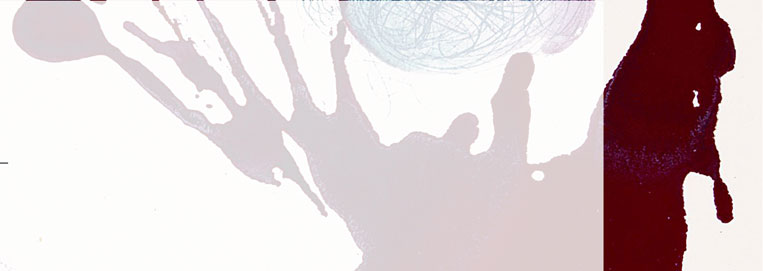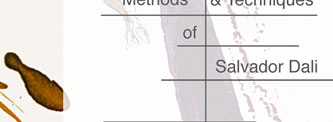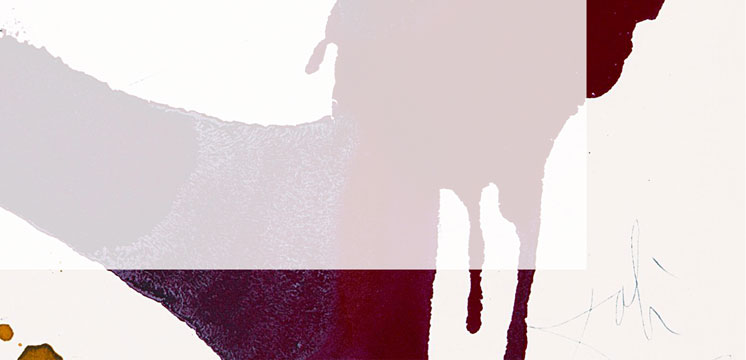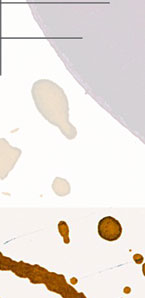









Once called Nuclear Mysticism, Quantum mysticism is a philosophical interpretation of Quantum mechanics, used as a means to explain the phenomena of consciousness, seeking to explain actual versus perceived reality. Denounced by Einstein, Quantum Mysticism is more of idea that lacks true scientific substance.[6] “As the famous Copenhagen interpretation of quantum mechanics argues, we cannot speak about an objective reality other than that which is revealed through measurement and observation.”[6] If something is true in reality it can be replicated through tests, and experimentation, unlike quantum mysticism, which is overly subjective. Quantum mysticism becomes too broad; because everyone believes, thinks and observes differently, so everyone’s individual reality is subjectively different. Perhaps, this is why Einstein opposed this particular interpretation of quantum mechanics, as he believed there was no room for subjectivity in science.[6]
Salvador Dali became enthralled with Quantum mysticism probably due to the philosophical concepts dealing with consciousness. Some of the philosophical claims of Quantum Mysticism include beliefs such as “There is no observer separate from reality and no separate reality from the observer.” Others include: [1][2][3][5]
Due to these philosophies religion can be easily incorporated into Quantum Mysticism. Perhaps with the emergence of Quantum Mechanics, along with Dali’s return to his Catholic roots (following WWII)[4] Quantum Mysticism attracted Dali. Though Quantum Mysticism isn’t an outlined method like Dali’s “Paranoid Critical Method,” you can see how Dali’s interest in Quantum Mysticism influenced his post-WWII artwork. A lot of this work deals with perceived reality, like in The Madonna of Port Lligat, which while incorporating his Catholicism also has objects hovering and floating blindly in space. In the paintings,Christ of St. John of the Cross, and Crucifixion Jesus’s cross floats above the ground. The paintingChrist of St. John of the Cross, you see Christ’s point of view from above, while in Crucifixion, you see the view of the spectators as Jesus hovers above. All these paintings deal with perceived reality, and how reality is “learned.” Another interesting take on Quantum Mysticism is Dali’s,The Disintegration of the Persistence of Memory, a different take on his original painting, The Persistence of Memory. In The Disintegration of the Persistence of Memory, Dali paints the same images of melting clocks over again, but this time the landscape and clocks are “disintegrating,” which not only relates to perceived reality, but also to the quantum mysticism philosophy that “Time is a human perception.”
It’s interesting to think about how Dali’s artwork created with his “Paranoid Critical” method was created from the subconscious, while his work influenced by quantum mysticism was created through what he believed to be a conscious component that connected everyone. Next time you view Dali’s work, think in terms of “There is no observer separate from reality and no reality separate from the observer.”[1][2][3][5] It’s bound to make his artwork more mystical. While you’re at, instead of thinking of his post WWII art in terms of how Quantum Mysticism influenced Dali, you could think of it as, ‘How Dali influenced Quantum Mysticism.’
Bibliography
2. Braden, Gregg. The God Code. New York: Hay House, 2005.
3. Chopra, Deepak. Ageless body, timeless mind the quantum alternative to growing old. New York: Crown Trade Paperbacks, 1994.
4. Descharnes, Robert, and Nicolas Descharnes. Salvador Dali. New York: Konecky & Konecky, 1993.
5. Talbot, Michael. The Holographic Universe. New York: Harper Perennial, 1992.
6. Zyga, Lisa. "Quantum Mysticism: Gone but Not Forgotten." PhysOrg 8 June 2009. 5 Dec. 2009 <http://www.physorg.com/news163670588.html>.
 |
||||||
 |
 |
 |
||||
 |
||||||
 |
 |
|||||
|
|
||||||
 |
|
 |
||||
 |
||||||
|
|
|
|
|
|
|
|